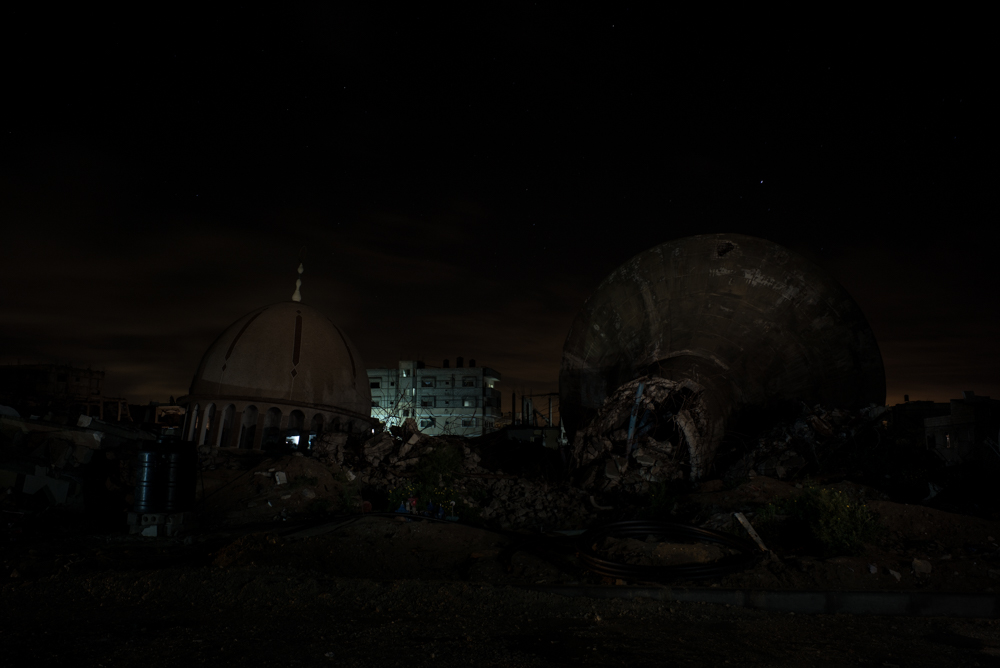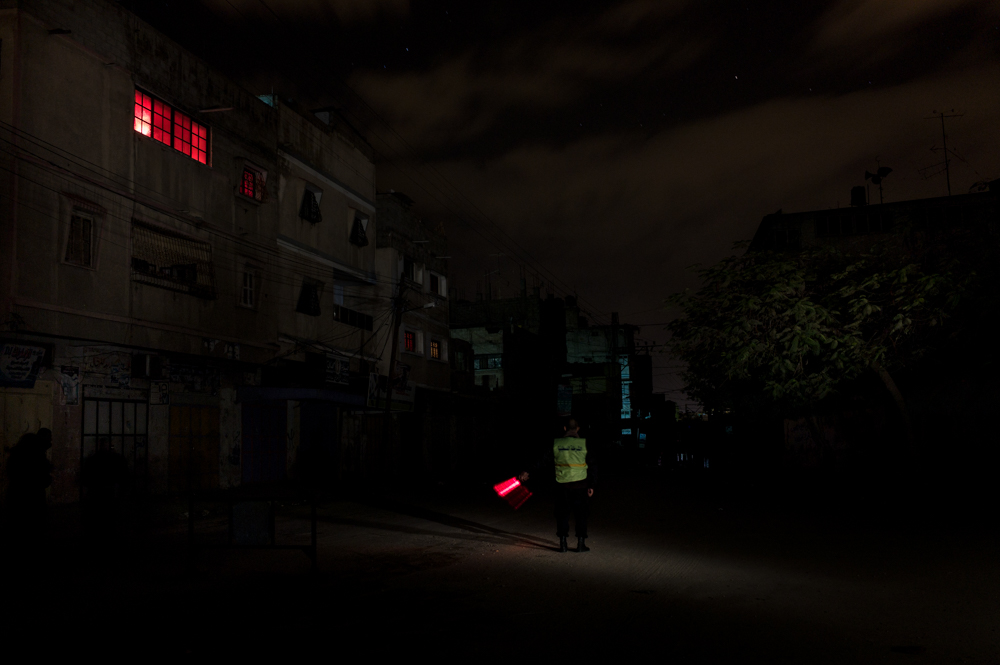Gaza BlackOut

-
PhotographerGianluca Panella
For Gazans, the basic necessities of daily life are endlessly tied to politics. Fuel represents one of the most fundamental examples of this entanglement. Gaza’s fuel supply is dependent on sales from Egypt, Israel, and the rival Palestinian Authority of the West Bank. At the end of 2013, a collision of these forces resulted in the overflow of raw sewage, unprecedented flooding from winter storms, and over 21-hour long blackouts of electricity. Gaza’s fuel shortages spiked most precipitously following the beginning of Israel’s siege of the Gaza Strip in 2007 and continue to this day. In recent years, the Hamas government of Gaza has pointed fingers most vehemently at their Palestinian rivals in the West Bank, the Palestinian Authority (PA). The PA, due to its international legitimacy, is allowed to sell fuel to Gaza through Israel; however, Hamas has accused the PA of tinkering with prices for political ends. Furthermore, as tensions in Egypt led to the ouster of the Hamas-allied Muslim Brotherhood government, Gaza suffered from souring relations with its second principle supplier, Egypt. The new Egyptian government destroyed key smuggling tunnels and was accused of limiting legal shipments into Gaza for political reasons. The Gaza Strip is dependent on electricity primarily purchased from Israel and Egypt, and thus, as political tensions heightened this fall, only about 30% of this demand was met for Gaza’s 1.7 million residents. Through my images, I sought to focus on one of the many violations of civilians that have been normalized in the Gaza context: the right to electricity. What struck me most about these blackouts was the sheer darkness of the Strip, an area known as one of the most densely populated places on earth.






